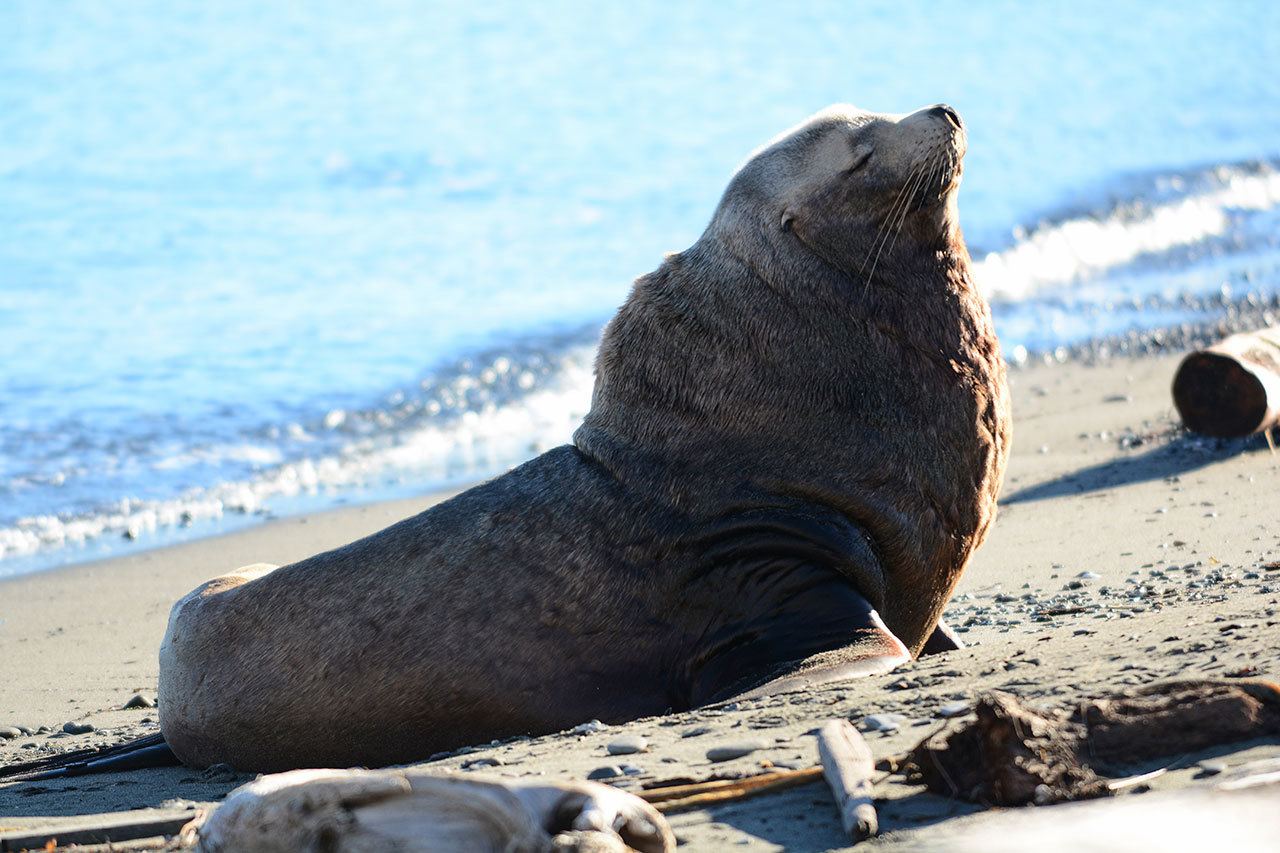PORT ANGELES — Old age beached a Steller sea lion that was euthanized after it was found dying on shore in January, but a finding during the animal’s necropsy has led researchers into another investigation.
A cancer of the penal sheath found in the animal is the first reported case in a Steller sea lion, according to Dyanna Lambourn, marine mammal research biologist and the lead investigator into the case of the sea lion found dying on a beach at the Nippon Paper Industries USA mill near Ediz Hook.
The animal, which had been beached for a week, was euthanized Jan. 14.
The cancer did not contribute to its dying, she said.
“As suspected clinically upon necropsy, this animal was geriatric. He had acute bronchopneumonia, severe fibrosis of lung and liver and also age-related changes in the brain,” Lambourn said in a summary of the necropsy findings.
“It was dying of old age,” Lambourn said in an interview Friday.
An incidental finding during the necropsy was “an in situ carcinoma caused by Otarine Herpevirus-1, which causes metastatic urogenital carcinoma in California sea lions,” Lambourn said in a summary of findings.
“While it is an interesting, incidental finding in this case it does have important ramifications for the overall population,” she said in her summary.
“There is still additional follow-up testing occurring on this case.”
More testing will be done on the lesion, as well as further investigation of the species.
“It’s not like we haven’t been looking for this disease in other Stellar sea lions. Since they are so closely related [to California sea lions] we would expect it’s probably there. It’s just we haven’t seen it.”
The herpes virus “can potentially be spread sexually,” she said. “It also can be spread by coming into contact with other animals.”
The Stellar sea lion weighed about 1,000 pounds when the decision was made to euthanize it. It was an adult male older than 15. By the time it was euthanized, the animal couldn’t lift its head and was hardly opening its eyes, said Melissa Williams, executive director of Feiro Marine Life Center, which responded to help the animal.
A Steller sea lion’s lifespan is typically about 20 years, she said.
The decision to put an end to the sea lion’s suffering was made jointly between the state Department of Fish and Wildlife and the National Oceanic and Atmospheric Administration’s Marine Mammal Stranding Network, Williams said.
SR3, a new marine mammal rehabilitation agency, provided veterinary and health assessment expertise.
Marine mammal strandings can be reported to the West Coast Marine Mammal Stranding Network at 1-866-767-6114.

